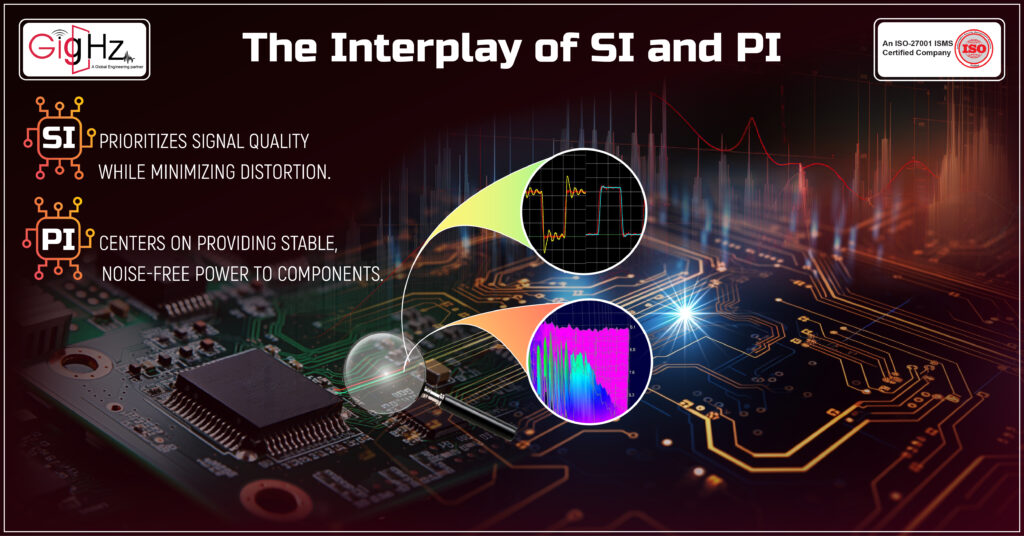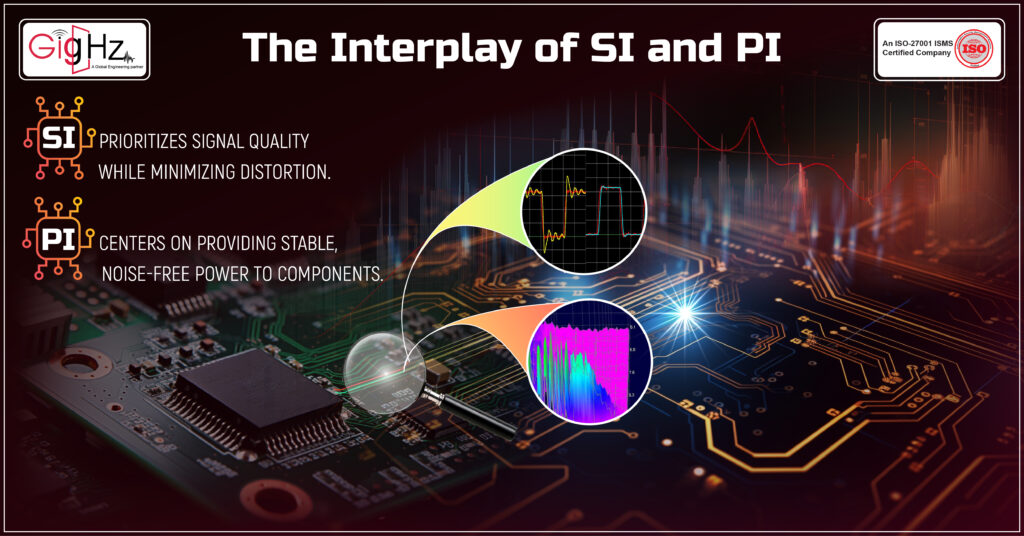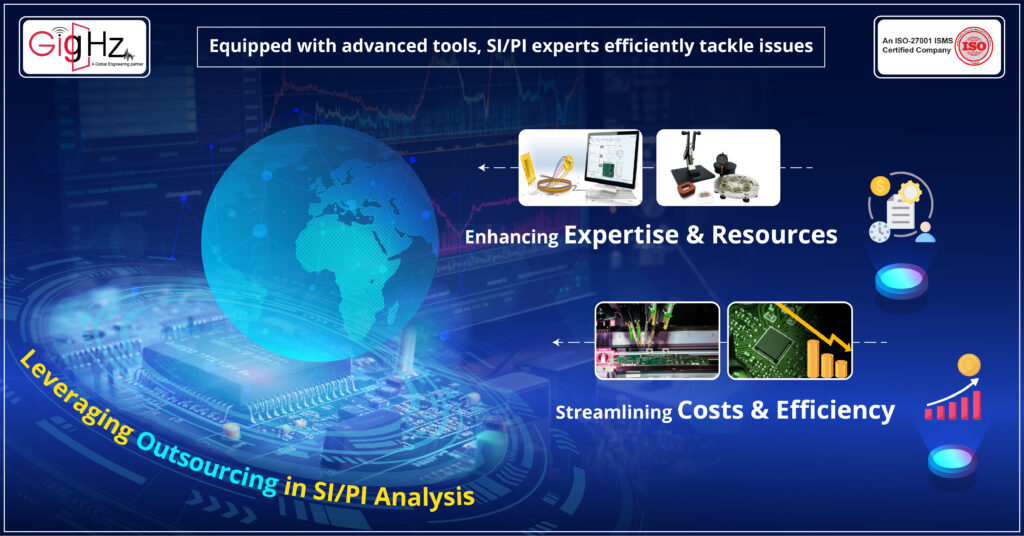SI and PI Co-Analysis
Welcome to the electrifying world where signals dance and power surges—the realm of electronic design! Ever wondered how the music streams smoothly, the video never stutters, and your battery lasts just long enough? It’s all thanks to the intricate partnership between two unsung heroes—Signal Integrity (SI) and Power Integrity (PI)


Lorem ipsum dolor sit amet, consectetur adipiscing elit. Sed laoreet tortor non neque volutpat tempor. Maecenas convallis justo euismod, accumsan eros feugiat, tincidunt mauris. Nulla sapien quam, ornare nec finibus et, venenatis ut arcu. Sed et erat sed dui fermentum venenatis sit amet venenatis lectus. Vestibulum ultricies malesuada massa sodales finibus. Vestibulum sodales orci eu pellentesque lobortis. Nulla ac congue ipsum.
Category :
Published Date :
October 28, 2023
Category :
Published Date :
October 28, 2023
Category :
Published Date :
October 28, 2023
Consider Signal Integrity (SI) as the conductor, ensuring that signals on ICs reach their destination with clarity and accuracy, while Power Integrity (PI) performs as the power supplier, securing everything operates smoothly.
But here’s the twist! These two forces don’t simply coexist; they simulate a dynamic interaction, shaping the performance and reliability of the PCBS and ICs in your devices. In this article, we’ll guide you on an interactive exploration through this captivating duet of signal integrity and power integrity in electronic printed circuit design and analysis.
Let’s dive into the electrifying world of SI and PI co-analysis!
What is Signal Integrity?
In PCBS, signal integrity denotes the quality and precision of an electromagnetic signal as it travels from the source to its intended destination in a system. Maintaining signal integrity on ICs means ensuring signals reach their destination without distortion, noise, or data loss.
Some Key points about Signal Integrity:
It relates to both analog and digital signals. Issues can occur due to impedance mismatches, crosstalk, reflections etc. that corrupt the signal.
Appropriate signal integrity is paramount if we want electronic systems like PCBS and ICs to function efficiently. Violations can cause unreliable data transmission, errors, failures or costly debug.
It becomes more challenging at higher signal speeds and frequencies. Problems like ringing, overshoot, ground bounce become prominent.
Simulations, modeling, testing and measurements are done to uncover and address signal integrity issues in a design early on.
Careful PCB layout, controlled impedances, terminations, decoupling capacitors, buffers etc. help improve signal integrity.
SI engineers optimize designs to maintain signal integrity through the entire path from source to destination. They analyze timing, noise, distortion to ensure clear and accurate signals.
What is Power Integrity?
Power integrity refers to maintaining the quality and reliability of power delivery in an electrical system or circuit. It involves preventing unwanted noise, fluctuations, and distortions in power rails that can lead to functional failures.
Some Key Aspects of Power Integrity:
It deals with providing clean, steady power supplies to all components in a system. This includes chips, boards, modules etc.
Poor power integrity can cause glitches, unwanted circuit behavior, data errors, performance issues and even component damage.
Factors like voltage drops, high switching currents, low PSRR, impedance mismatches, noise coupling etc. affect power integrity.
PI analysis looks at the entire power distribution network from sources to sinks to identify problem areas.
Decoupling capacitors, bypassing, pick-up/dampening, isolation, routing techniques help mitigate PI issues.
PI must be validated through analysis, modeling, simulation and measurements during a design process.
PI engineers focus on power delivery network design and modeling to maintain ideal power conditions for system reliability.
The Interplay of Signal Integrity and Power Integrity

Signal Integrity (SI) and Power Integrity (PI) are not isolated concerns but deeply interconnected aspects of electronic system design.
SI focuses on maintaining signal quality and reducing distortion, while PI revolves around delivering a stable and noise-free power supply to components.
The complex interplay between these two domains can pose challenges in high-speed electronic systems, making co-analysis an essential practice.
Addressing SI without considering PI or vice versa often leads to suboptimal designs and costly debugging in later stages of development.
The SI-PI Symbiosis: Power Integrity Challenges
In recent scenarios where signals switch rapidly, such as in high-speed data lines, the associated current spikes can disrupt the voltage levels on the PDN. This disturbance, known as simultaneous switching noise (SSN), can cause voltage droop, thereby impacting the power delivered to components and may affect both SI and PI.
Engineers must recognize that addressing SI issues, such as overshoot and ringing, is inseparable from maintaining a stable power supply.
Power Integrity’s Influence on Signal Integrity
Conversely, power distribution issues can reverberate into the realm of signal quality. When the PDN fails to deliver a consistent voltage supply, it can lead to signal integrity problems like jitter, skew, and timing errors.
Voltage noise, often originating from power distribution challenges, can corrupt signals, making them susceptible to noise-induced errors.
This reciprocal relationship underscores the need to consider both SI and PI holistically, as improvements in one domain can yield benefits in the other.
Simultaneous Switching Noise (SSN): The Bridge Between SI and PI
Simultaneous switching noise (SSN) serves as a bridge that links SI and PI. It occurs when multiple signals transition simultaneously, causing rapid and transient changes in current demand.
These SSN-induced current spikes can lead to voltage fluctuations and noise on the PDN, adversely affecting signal integrity.
Mitigating SSN requires a comprehensive co-analysis to optimize electronic systems for performance and reliability.
Case Study: Co-Analysis in DDR4 Memory Interfaces
Consider the case of DDR4 memory interfaces, these interfaces demand high-speed signaling and a robust power delivery network.
By conducting co-analysis, engineers can address signal integrity issues like signal reflections and crosstalk while simultaneously optimizing power distribution.
Co-Design Tools and Techniques

Signal Integrity (SI) and Power Integrity (PI) co-analysis demands a robust set of tools and techniques.
Engineers rely on specialized simulation software, measurement instruments, and proactive design strategies to ensure that both SI and PI are optimized.
These tools are essential for identifying and rectifying issues early in the design phase, saving time and resources.
Simulation Tools for SI and PI Co-Analysis
Simulation tools specifically designed for co-analysis, such as Cadence Sigrity and Keysight ADS, empower engineers to model and analyze SI and PI simultaneously.
These tools provide a comprehensive view of how signals and power interact within an electronic system, helping engineers identify and resolve potential issues.
Time Domain Reflectometry (TDR) and Vector Network Analysis (VNA)
Measurement techniques like Time Domain Reflectometry (TDR) and Vector Network Analysis (VNA) play a crucial role in co-analysis.
TDR helps visualize signal reflections and impedance mismatches, while VNA is instrumental in characterizing the behaviour of high-frequency components.
These measurement tools provide invaluable insights into SI and PI performance.
IBIS-AMI: A Game-Changer for Co-Analysis
The Input/Output Buffer Information Specification-Algorithmic Modelling Interface (IBIS-AMI) has emerged as a game-changer for co-analysis.
It allows engineers to create sophisticated models for high-speed interfaces, enabling accurate SI and PI simulations.
IBIS-AMI models facilitate co-analysis by capturing the complex interactions between signals and power.
Case Studies in Co-Analysis Success
Real-World Examples of SI and PI Co-Analysis Achievements
In this section, we delve into real-world case studies that demonstrate the tangible benefits of SI and PI co-analysis.
These success stories showcase how engineers have effectively optimized both signal integrity (SI) and power integrity (PI) to enhance the performance and reliability of electronic systems across various applications.
High-Speed SerDes Links: Achieving Robust Co-Analysis
High-speed Serializers and Deserializers (SerDes) play a pivotal role in modern communication systems.
Co-analysis has been instrumental in optimizing SerDes links, mitigating issues like jitter and ensuring signal integrity while simultaneously addressing power distribution challenges.
These achievements result in robust and dependable data transmission.
Co-Analysis in Automotive Electronics: Meeting Stringent Requirements
In the automotive industry, where safety is paramount, co-analysis has proven indispensable.
SI and PI co-optimization ensures that electronic components function reliably under harsh conditions, contributing to vehicle safety and performance.
Leveraging Outsourcing in SI/PI Analysis Tools

In today’s fast-paced tech landscape, Signal Integrity (SI) and Power Integrity (PI) analysis play a pivotal role in ensuring the reliability and performance of electronic systems.
However, not all companies have the in-house expertise or resources required to conduct comprehensive SI/PI analysis.
In such scenarios, outsourcing SI/PI analysis can be a strategic move that offers numerous advantages.
Enhancing Expertise and Resources
Outsourcing SI/PI analysis provides companies with access to specialized expertise and resources they may not possess internally.
This external perspective can bring fresh insights and innovative solutions to complex problems, ultimately leading to higher-quality electronic designs.
Furthermore, SI/PI analysis often requires a diverse set of skills, from simulation and modeling to measurement and validation.
Outsourcing allows companies to tap into a pool of experienced professionals who excel in these domains, reducing the learning curve and accelerating project timelines.
Streamlining Costs and Efficiency
Outsourcing SI/PI analysis can result in cost savings by eliminating the need for companies to invest in these resources themselves.
Instead, they can leverage the capabilities of external service providers on a project-by-project basis, optimizing costs and resources.
Additionally, outsourcing SI/PI analysis can lead to increased efficiency. External experts are well-versed in best practices and can execute analysis tasks more quickly and effectively, freeing up the company’s internal teams to focus on core competencies.
This streamlined approach can help meet project deadlines and reduce time-to-market for electronic products.
Conclusion
In simple terms, SI and PI co-analysis is the key to ensuring that electronic systems work reliably and perform at their best.
Looking forward, embracing co-analysis, dealing with integration challenges, and using emerging tech trends will keep us ahead in electronic design, making sure our systems are both reliable and high-performing.
Co-analysis isn’t just a trend; it’s the way to excellence in electronics.
For more details, please don’t hesitate to reach us
